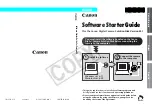
WiseScript Editor Reference
51
WiseScript Actions
z
Parameters
(Optional) Enter parameters for running the .EXE. If you specified .msiexec.exe in
Program path, use Windows Installer command-line options. You can use these
command-line options to create a WiseScript that captures an application by
performing a silent installation of an .MSI. Example: /package “C:\Application.msi” /
qn.
z
Return variable
(Optional.) Enter a name for the return variable. When this script action runs
successfully, either 0 or 1 is placed in this variable.
See also:
About SVS Script Actions
on page 39
Change SVS Layer GUID
This SVS script action changes a layer’s GUID.
Example: You can use this action to create a copy of a layer that is seen by SVS as a
different layer. This is similar to changing the ProductCode and PackageCode of an .MSI
file. To create a copy of a layer, create a script that imports an archive file, changes the
layer’s GUID, and then exports a copy of the original archive file.
To complete the dialog box
z
Layer GUID
Enter the layer’s GUID (globally unique identifier) or a variable that represents the
layer’s GUID. If you enter the layer’s GUID, do not include the { } brackets.
For information on creating a variable for a layer’s GUID, see
Create SVS Layer
on
page 65 and
Find SVS Layer GUID
on page 84.
z
New Layer GUID
Enter a new GUID for the layer or a variable that represents the new GUID. If you
enter a new GUID, do not include the { } brackets.
z
Return variable
(Optional.) Enter a name for the return variable. When this script action runs
successfully, either 0 or 1 is placed in this variable.
See also:
About SVS Script Actions
on page 39
Check Configuration
This action tests the hardware configuration, operating system, and other characteristics
of the destination computer. As a result of this check, the action can display a message,
halt the installation after displaying a message, or start a conditional block.
When a WiseScript is called by a Windows Installer installation, you can also check
graphics by using the System Requirements page in Windows Installer Editor.
















































